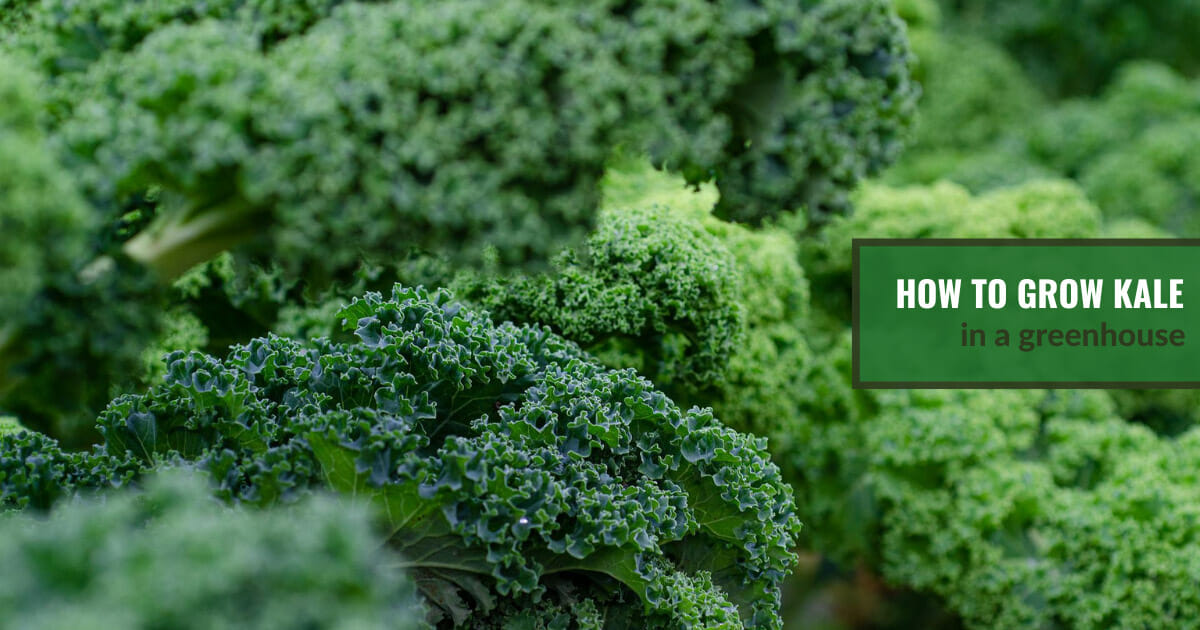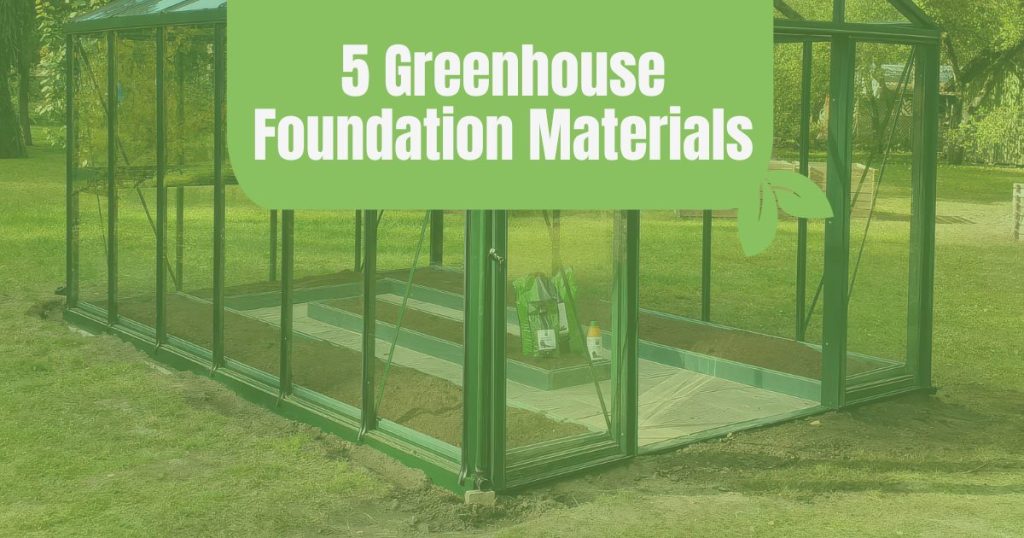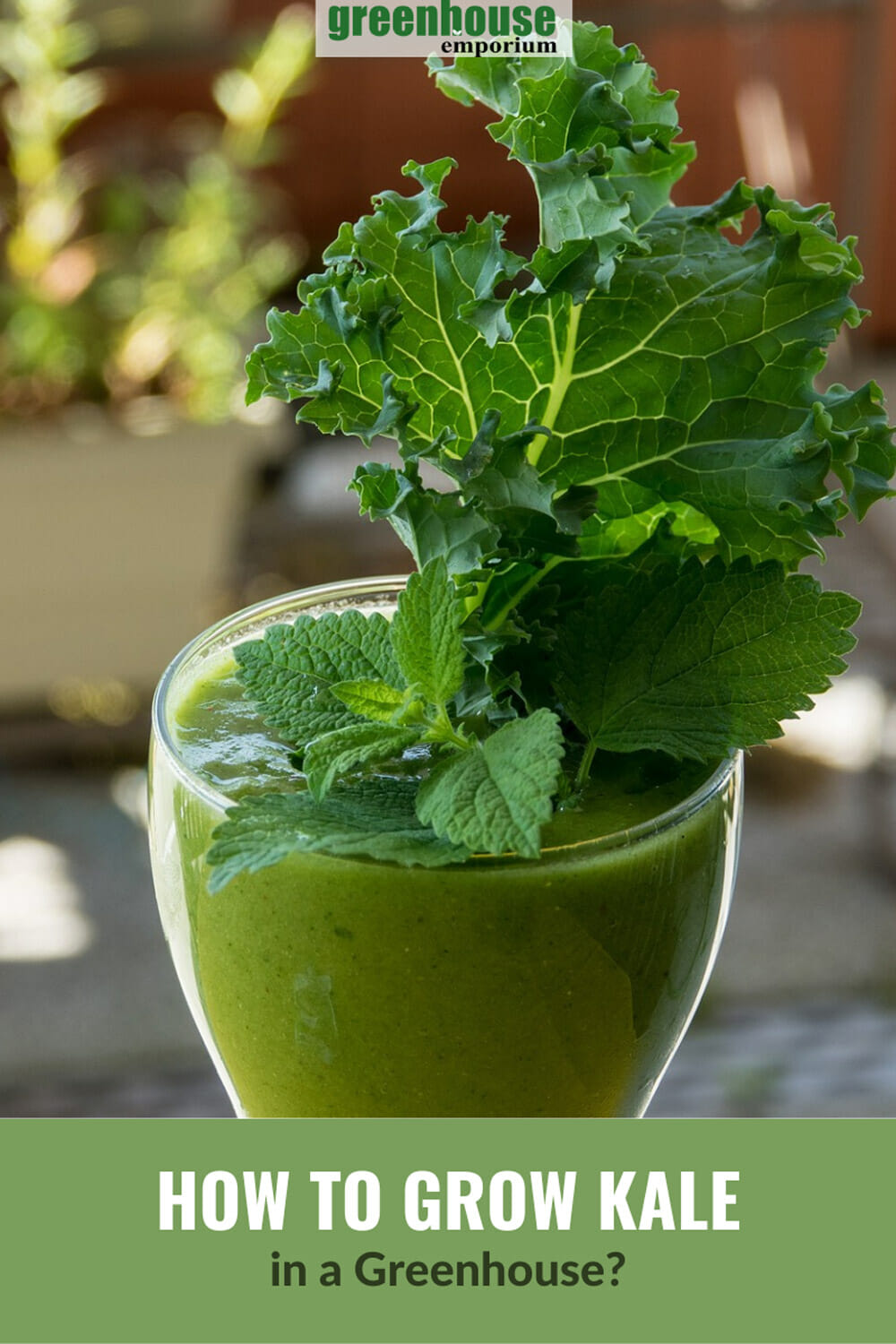
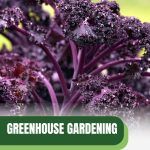



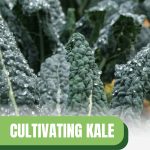




Kale is a cold-season crop that can be grown year-round with the help of a greenhouse. Packed full of essential vitamins and minerals, it’s an excellent vegetable to have on hand. Plus, it’s far easier to grow than its fussier cousin, the cabbage.
Growing kale is a great way to extend the growing season. As a cold-season crop, it won’t require much additional heat, if any, though grow lights may be used to meet adequate light requirements.
There are several great varieties of kale that all share the same general growing requirements: full sun, moderate temperatures, regular watering, and nutrient-rich, well-draining soil. Keep reading to learn all about how to grow delicious bunches of kale in your greenhouse!
Quick overview of growing kale in a greenhouse
- Type: Cool-season crop
- Time from seed to harvest: 75 days
- Germination temp: as low as 40°F
- Time until first emergence: 4-7 days
- Best temp to grow: 60-75°F (can tolerate frost down to 20°F, frost will improve the taste)
- Height: 1.5-3 ft
- Spread: 1-3 ft (plant in rows)
- Grow from seed: 1/4-1/2 in deep, 1 in apart; rows 12-18in apart ; thin to 8-12in spacings
- Companions: Beets, celery, cucumbers, herbs, onions, spinach, chard, potatoes
- Keep away from: Beans, strawberry, tomatoes
How to plant kale in a greenhouse
Growing kale in the greenhouse starts with picking the right variety for your climate and needs.
As with most leafy greens, it’s best to start your own plants from seed. Not only does this allow you to control the growing conditions, but it also ends up saving you money. Buying seedlings is expensive, though you can certainly go that way if you choose.
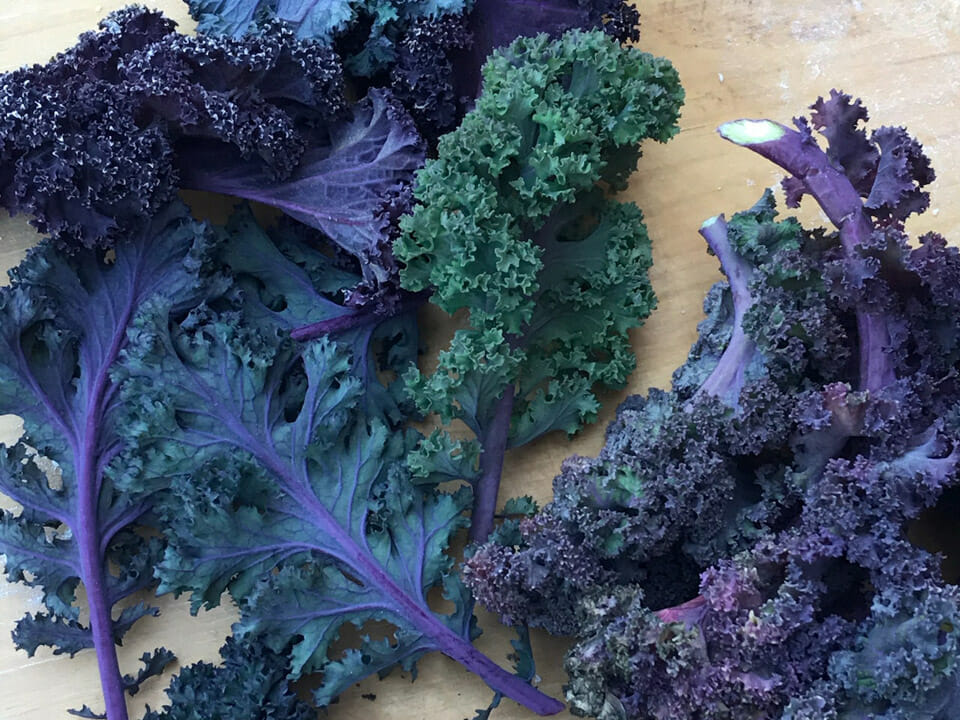
Picking the right variety of kale to grow
There are many different varieties of kale to choose from. Some grow better in a particular climate, while others are chosen for their flavor or texture.
Here are four of the most popular types of kale to grow in a greenhouse:
- Red Russian Kale: fast and easy to grow, with flat oak-shaped leaves with a tender texture and mild sweetness.
- Siberian Kale: ideal for a cooler greenhouse, it’ll develop a sweeter taste if exposed to a mild frost. Its leaves are large and flat with ruffled edges.
- Lacinato Kale: also known as Tuscan Kale, Dinosaur Kale or Black Cabbage, this kale produces large, dark green leaves with a bumpy texture. Heat and cold tolerant, it also packs great ornamental value.
- Curly Kale: this is the variety that you’ll usually see in supermarkets. Versatile and easy to grow, it has a nutty sweetness.

How to start kale from seed
You can either direct-sow kale seeds or start them in plug trays. If you have the space, you can even do both so that you have back-up seedlings in case the seeds don’t germinate evenly.
You can plant kale in a greenhouse in late winter or early spring, or wait until early fall. Avoid growing kale in a greenhouse in the summer, as excessive heat will result in bolting.
How to direct-sow kale seeds
To direct-sow kale seeds, plant seeds in the ground or raised beds about twice as deep as the size of the seed (no more than ½ inch) and 6 inches apart. If planting in rows, keep rows at least one foot apart.
Kale seeds usually take about 5-7 days to germinate. Give them a thorough watering immediately after planting, and make sure the soil doesn’t dry out in the first few days.
When the seedlings have at least two true leaves each, thin them to 12 inches apart.
How to start kale in trays
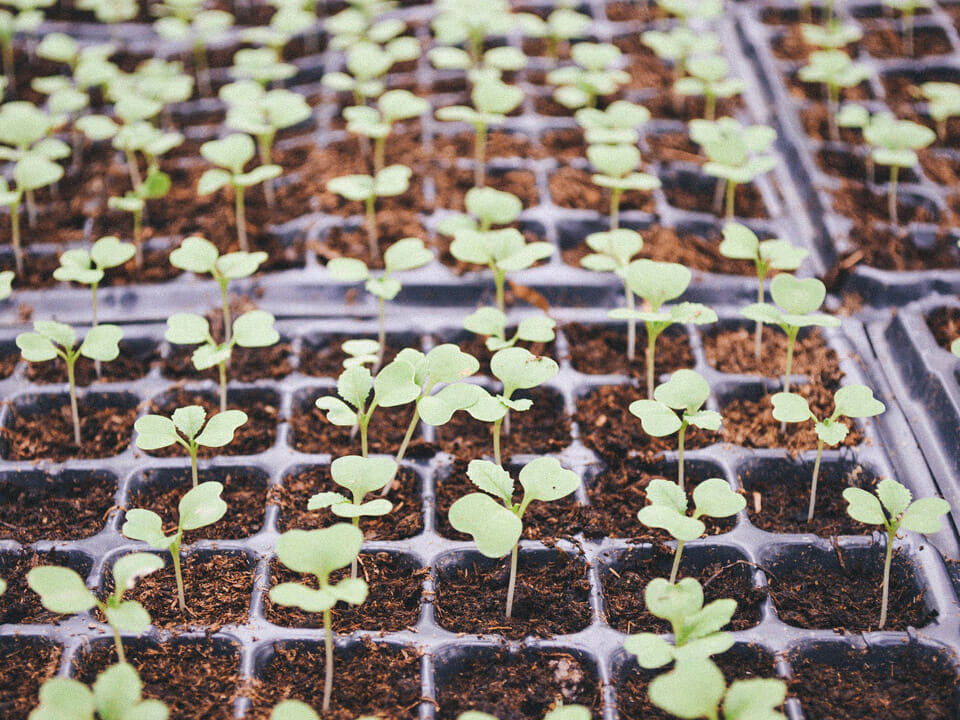
If using plug trays, plant one kale seed per cell. As with direct-sowing, it’s important to make sure the soil doesn’t dry out, which can result in uneven germination. Kale seedlings are ready to transplant into the ground or pots when they have 2-3 true leaves.
How to care for kale in a greenhouse
Once established, kale is quite easy to grow and care for. Still, it’s important to be aware of some of the plant’s particular requirements, which we’ll go over in this section.
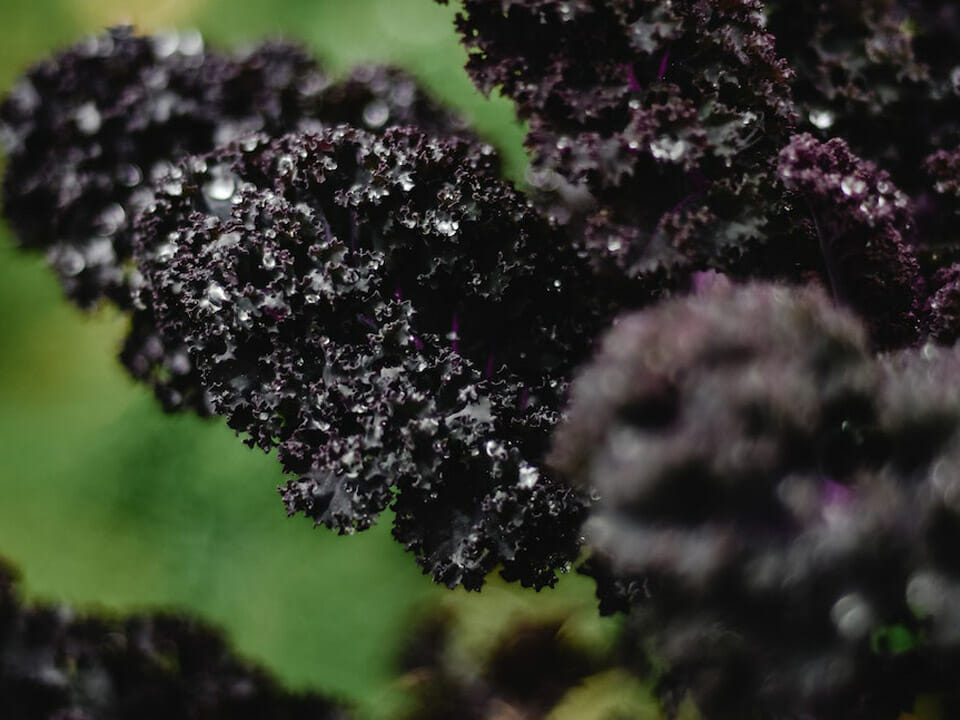
Light requirements
Kale needs full sun for healthy growth. That means at least 6 hours of direct sunlight each day. If you have a freestanding greenhouse, with no trees or nearby structures to block the sun, you’ll have no problems growing this crop.
Kale can also tolerate 4 to 6 hours of direct sun per day (partial shade), but it will be slower to grow.
Temperature
The ideal temperature range for growing kale is between 60°F and 75°F. To encourage seed germination, plant kale seeds when the soil temperature is above 45°F.
Once established, kale is frost-hardy and can tolerate temperatures as low as 20°F, making it an excellent crop to grow in winter. In fact, exposure to a light frost can result in sweeter-tasting kale.
On the flip side, kale is quite heat-sensitive. It can struggle to grow in temperatures above 75°F and will bolt or flower if exposed to temperatures above 80°F for several days in a row. To prevent bolting, avoid planting kale in the greenhouse between late spring and late summer, or try to keep your greenhouse cool.
Soil conditions
Plant kale in well-draining, nutrient-rich soil. This crop is not pretentious about the soil pH, and as long as you’re within the 6.0 to 7.5 range, your plants will be fine.
Don’t have a soil testing kit yet?
We recommend the SONKIR soil pH tester. It’s a reasonably priced option that provides pH level, moisture, and light.
For planting directly in the ground, start by digging the soil to a depth of one foot. Turn it and break up any large clumps, then work in organic matter such as compost or manure.
If you’re planting in raised beds or containers, a mixture of universal potting soil and compost will do the trick. You can also add some straw or coconut husks to improve drainage. A sprinkle of worm castings or organic starter fertilizer will give your kale plants a nutrient boost.
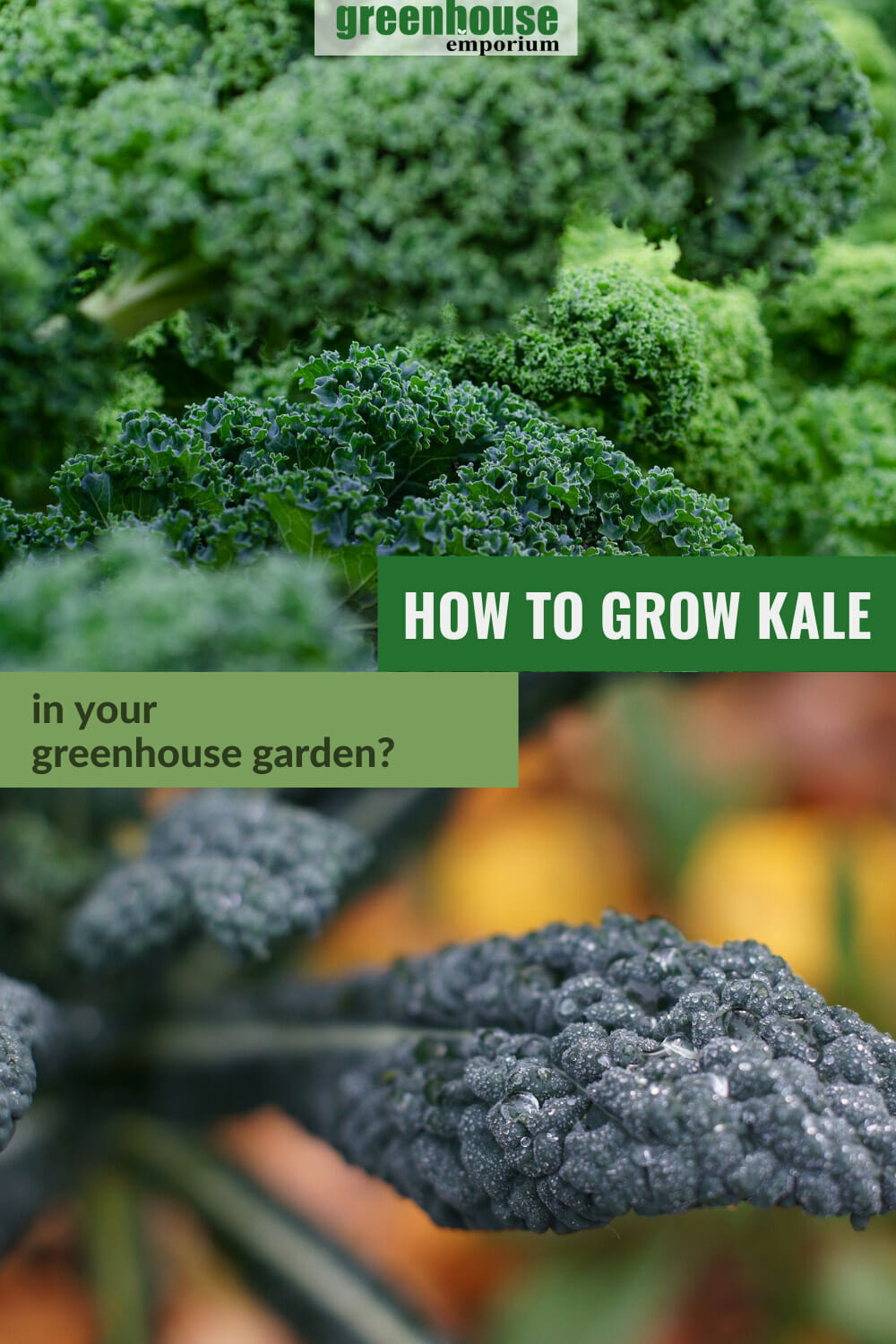
Plant spacing
Space individual kale plants 12-18 inches apart. Use this same spacing when transplanting young plants from a nursery or plug tray to ensure the plants have plenty of space to grow.
To grow kale in containers, the ideal pot should be 8-10 inches wide with excellent drainage. To avoid overcrowding, plant just one kale plant per pot. You can either use kale transplants or sow 2-3 seeds per container, then only keep the strongest, healthiest looking seedling.
Watering
Water your kale regularly, providing at least an inch of water per week. Check the soil with your finger, and if the top 2 inches feel dry to the touch, give the plants a good soak.
Never let your kale go thirsty. Water-related stress will make the leaves become leathery and bitter, and increase the risk of bolting. You can apply a layer of straw or leaf mulch around the plants to help retain moisture and keep the soil cool.

Fertilizing
Kale is a heavy feeder that needs lots of nitrogen to sustain its fast, bushy growth. For best results, amend the soil with organic matter before sowing or transplanting. This way, your crops won’t need any additional feeding for the first 3-4 weeks.
You can fertilize kale once monthly after the seeds germinate or after you’ve transplanted the seedlings. Use an organic fertilizer that’s rich in nitrogen, such as compost tea or liquid seaweed. Repeat applications according to the instructions on the manufacturer’s label.
Common issues when learning how to grow kale in a greenhouse
It’s unlikely that your kale plants will suffer from severe pest problems, especially in the protective environment of a greenhouse. Still, here are the main pests and diseases to be aware of:
- Cabbage white butterflies are the main kale pest. Check your plants regularly and pick off any caterpillars by hand, disposing of them in a bucket of soapy water.
- Aphids and whiteflies can also target your kale crop. Hose down the plants to dislodge these pests, then spray the plants with a mild insecticidal soap solution.
- Slugs can sometimes find their way into the greenhouse. Set up beer traps to keep them away from your kale. If you find any munching on the leaves, pick them by hand and drown them in a bucket of soapy water.
- Powdery mildew is a fungal disease that’s common in warm, humid growing conditions. To prevent it, avoid overhead watering, and remember to regularly open the vents and roof windows to ensure good air circulation. Remove infected leaves, and spray the plants with water and baking soda solution.
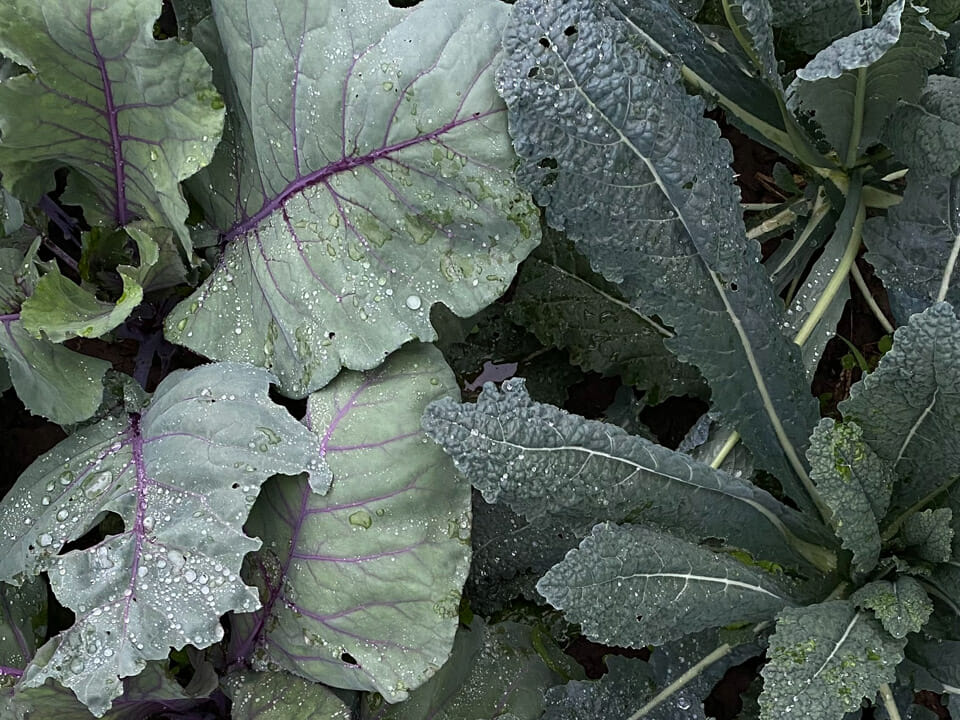
How to harvest kale
You can start harvesting kale quite quickly, about 30 to 60 days after the seeds germinate. Harvest it earlier for tender baby kale, or wait until the plant is at least two months old for larger leaves.
To harvest kale leaves, use a sharp, clean knife and cut the bottom leaves of the plant. Never harvest kale from the top, and make sure to avoid cutting or damaging the growing bud in the middle. If you do, the kale will stop growing new leaves.
Kale will continue to grow until temperatures get too hot (over 80°F) or too cold (below 20°F).
In the right growing conditions, kale can live in your greenhouse for up to two years before it starts flowering and growing to seed. However, the leaves will develop a tougher texture and bitter taste with each passing month.

